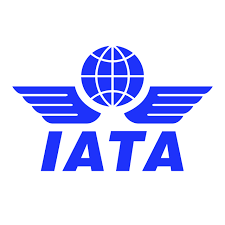The Federation of Indian Airlines (FIA), representing major Indian carriers, has sought waivers on user development fee and aviation security fee for a year at Srinagar Airport to boost air travel demand to and from Kashmir. Currently, every departing passenger shells out ₹1,050 as UDF and ₹200 as Aviation ASF plus GST, as per FIA.
Read More »Indian airlines to add 86 new commercial aircraft in 2025, down from 107 in 2024: Cirium
According to Cirium, an aviation analytics firm, Indian airlines have seen a significant influx of new aircraft in 2024, with 97 deliveries already completed and 10 more expected. Alternatively, Cirium’s data suggests a slight decrease in 2025, with 86 new aircraft projected.
Read More »Indian airlines saw 12% growth in domestic air traffic, flew 1.42 crore passengers in November this year: DGCA
According to the Directorate General of Civil Aviation (DGCA), India’s commercial airlines flew 1.42 crore passengers on domestic routes in November this year, representing a robust 12% increase compared to the same month in the previous year. IndiGo maintained its position as the market leader with a 63.6% share of air traffic, followed by Air India 24.4%, Akasa Air 4.7% and SpiceJet 3.1%.
Read More »Bilateral flying rights key to India’s aviation growth, offer more direct global connectivity: IATA Chief
Willie Walsh, Director General, International Air Transport Association (IATA) expressed confidence that India would ease bilateral flying rights, especially as Indian carriers like Air India and IndiGo broadened their fleets with wide-body aircraft. He underlined the benefits of such agreements, highlighting that an increase in the rights will enable Indian airlines to offer more direct international connections.
Read More »We want more airlines to operate in India, ready to extend support to new airlines to new ventures: KR Naidu
Believing that more competition will make air travel cheaper, KR Naidu, Civil Aviation Minister, GoI, said that the govt wants more airlines in India and doesn’t want a duopoly situation. We are facilitating new airlines to come in even if they are looking to start with one or two aircraft and are ready to provide support and aid to them to start their business, he said.
Read More »India’s passenger aircraft fleet to grow from 720 in 2023 to 3,800 over next 20 years, predicts Cirium
According to the 2024 Cirium Fleet Forecast, the Indian passenger aircraft fleet is forecast to rise from 720 at the end of 2023 to more than 3,800 over the next 20 years. The data analytics firm for the aviation industry said that aircraft growth will drive Indian airlines’ share of Asia-Pacific’s entire passenger fleet from 8% today to 18% in 2043.
Read More »India’s Aviation Sector Needs $170 Billion Investment: S&P Global Ratings
India’s aviation is undergoing a period of unmatched growth. To meet the soaring demand for Indian air travel, the sector will need to make significant investments in infrastructure and equipment. According to a report by S&P Global Ratings, Indian airlines will need to spend $150 billion to finance outstanding orders for 1,700 aircraft. Additionally, $24 billion will be required to build new airports and expand existing ones. This substantial investment is essential to accommodate the projected doubling of domestic passenger traffic to 300 million by 2030. The Indian government authorities aim to double the number of airports by 2030, creating world-class aviation hubs that can compete with established centres like Singapore, Dubai, and Doha. S&P Global Ratings believes that the timing is favourable for the aviation sector to raise capital. Rising passenger traffic, relatively cheaper domestic financing rates, and supportive government policies on foreign ownership are expected to boost funding prospects. While borrowings for airlines and airports will increase, the reliance on aircraft lessors and domestic banks could help mitigate the financial burden.
Read More »Indian airlines gear up to operate 24,275 weekly domestic flights from March 31, departures rise by 2.3%: DGCA
In a significant step, India airlines are bracing up for an increased flight frequency in the upcoming summer schedule, beginning from March 31 by operating 24,275 weekly domestic flights. According to the DGCA, the number of weekly departures is set to rise by 2.30 per cent compared to the ongoing winter schedule, where scheduled carriers are operating 23,732 flights.
Read More »Indian airlines order 1,000 aircraft to meet raising demands, bringing total count to 1,700 by 2030
According to a recent report by Booking.com & McKinsey, Indian airlines have ordered more than 1,000 units of aircraft, bringing the total number of planes between 1,500 and 1,700 units by 2030, to prepare for the growing appetite for travel.
Read More »Domestic demand for Indian airlines climb 14.8% in June 2023; 1.3% more than June 2019
The current International Air Transport Association (IATA) report announced that the domestic demand for Indian airlines increased 14.8% in June and was 1.3% higher than in June 2019. Post-COVID recovery momentum continued in June for passenger markets.
Read More » Tourism Breaking News
Tourism Breaking News









